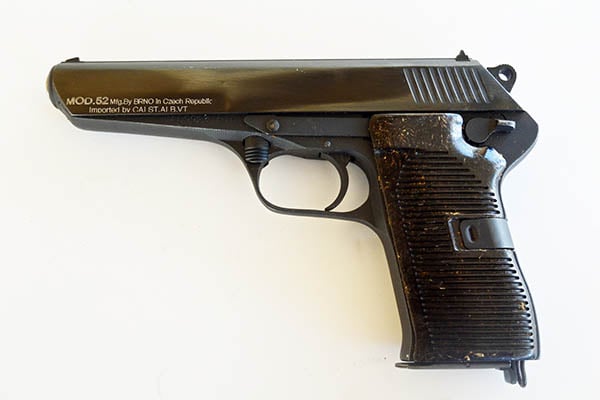
Last Updated on
By Mike Searson
One of the most unusual designs to come from arms maker Ceská Zbrojovka (CZ) is the CZ52 pistol. Over 200,000 of these single action pistols were built between 1952 and 1954, and they served the Czech military for over 30 years. After the fall of the Soviet Union in the early 1990s, the bulk of these pistols were imported to the US by Century International Arms.
History and Construction
Designed by two brothers, Jan and Jaroslav Kratochvíl, this single action pistol is unique in that it relies on a roller locking mechanism as opposed to the Browning recoil system which was more common on service pistols of that time period.
This type of mechanism is more common in machine guns (MG42) and rifles (HK series) and may seem like overkill for a pistol chambered in 7.62 X 25mm. One theory lies that the pistols were built to use higher pressure submachine gun ammunition like those used in the PPSH-41. Yet the reality may be closer to the fact that the Czechs wanted the pistol in 9mm Parabellum and at the last minute had to adopt the current Warsaw Pact pistol caliber in 7.62 X 25mm.
Regardless of the reason, the recoil spring, enveloping the barrel, provides the tension to lock it and the slide in battery because of these rollers. The firing of a round causes the barrel and slide to recoil simultaneously as the locking block remains stationary. The rollers disengage from the slide through two recesses in the locking block, allowing the slide to move rearward. This action resets the hammer, extracts the fired case and ejects it. As the slide returns forward it strips another round from the magazine and chambers it as it continues forward.
The pistol comes with no slide release, although an aftermarket design was made. When the slide locks home on an empty magazine, the shooter needs to pull it slightly rearward after inserting a fresh one to load a round. The safety functions as a decocking lever by pushing it upward. Some shooters have reported this as a point of failure, meaning that the use of the decocking lever can cause the pistol to fire. We have never experienced this personally, but always exercise caution just the same.
If you follow the basic rules of firearm safety at all times, particularly with always pointing the pistol in a safe direction, this should not be an issue.
One major weak link in this pistol is the firing pin. Whether the lack of quality in the steel used to make them, or the heat treatment performed later being poor, this part is known to shatter while dry-firing. There are aftermarket stainless steel firing pins available from a few small manufacturers who specialize in the CZ52. If you do not wish to replace the firing pin, the best advice is to use snap caps or avoid dry-firing in the first place.
Takedown of the CZ52 is remarkably simple. Just pull down the pair of serrated latches and lift off the slide.
The grips are held in place by a C-shaped steel spring clip that can be pried off via a flat head screwdriver or the pistol’s cleaning rod. As the grip frame is unusually long from front to rear, some shooters replace these grips with slim line replacements made of wood or rubber from companies such as Hogue or a host of custom grip makers who specialize in this particular model.
We generally do not recommend taking the pistol apart further to conduct routine maintenance. The remainder of the pistol’s slide and frame work are surprisingly complex.
Originally these pistols had a grey phosphate parkerized coating. Most arsenal refinished pistols were refinished in a hot bluing solution. Century’s final batch had a nicer blued finish performed by BRNO in the Czech Republic.
The majority of these pistols are chambered in 7.62 X 25. However, Century did offer a few that had a 9mm barrel and such barrels are marked. A large amount were offered with a spare conversion barrel and from the mid 1990s until 2002 or so, US-made aftermarket barrels in 9mm were available with threads, extended length or compensated muzzles. Supply of these barrels seems to have dried up.
As shooters, these pistols were great from an economic standpoint. We have bought them for as low as $99 and have seen them rise to three or four times that amount. The ammunition was extremely cheap for a long time, but as the surplus has dried up, commercial ammunition has filled the void at a higher price point.
Markings
As with most military issued pistols there are a plethora of markings and stamps found on the CZ52 as well as a mythology around their meaning. While researching this pistol for a book I contemplated in the 1990s, I had a chance to talk with a few Czech Armorers to find out their exact meaning.
On the left side of the frame you will find the serial number and the code for the factory where the pistol was made. The letters “rid” mean that the pistol was made for the Czech Army. “Česká Zbrojovka Strakonice” or simply ČZS mean that the pistol was made for the commercial or international market.
Switching over to the right side gives a little more information. A pair of crossed Roman swords is the proof mark of the Czech Army. These are followed by a two digit code indicating the year that the pistol was manufactured. A punched oval depression with the letters VOR or VOP mean that the pistol was refurbished at one of two arsenals. This mark is most often followed by a two digit date code representing the year it was refurbished. Some importers stamped the make and model of the pistol as well as the caliber here, Century Arms, however most often marked the slide on the left side.
The serial number will be found on the barrel’s chamber visible through the ejection port. The letter T positioned inside a circle represents a military test proof mark.
You may see a series of 1 to 12 dots made by a punch on the top of the slide. Internet gun lore claims everything from an accuracy test (1 dot being the most accurate) to number of trips it made to the armory for repair to indication of a Rockwell hardness test on the slide. Those last two anecdotes seem the least likely.
The truth is that no one knows for certain. The most plausible theory is that it is an indicator for the pistol’s point of aim based on the hands of a clock. This holds that the single dot represents 12 and each dot after that represents the next position. That could possibly account for the single dot specimens being the most accurate.
Shooting the CZ52
In spite of the roller locked recoil system, the pistol packs a good wallop when fired. We suspect the grip angle is part of the culprit as well as the higher pressure sub-machinegun ammunition we use most often.
Our CZ’s shoot to point of aim and while not tack driver’s they keep a decent group at short range. They are loud and really hot ammunition can throw a nice fireball, particularly the steel cased Polish surplus that used to come in a big Spam can.
Accessories
When buying a CZ52, it will most likely lack a factory box. However most of these pistols shipped with a leather flap-style military holster typically made from pig skin. The holster features a magazine pouch and a cleaning rod (that can be used to remove the grip spring clip). Most pistols shipped with two magazines. Replacement holsters, cleaning rods and magazines are available and the magazines will accommodate either the 7.62 X 25 or 9 X 19 rounds.
The holsters are typically date stamped on the interior and have the same crossed sword Czech Army proof mark that is found on the pistol.
Old handguns like this may seem a bit outdated for sporting use or self-defense and there are much better options to be had in those realms. We like these old blasters because holding one is literally like holding a piece of history in your hand.

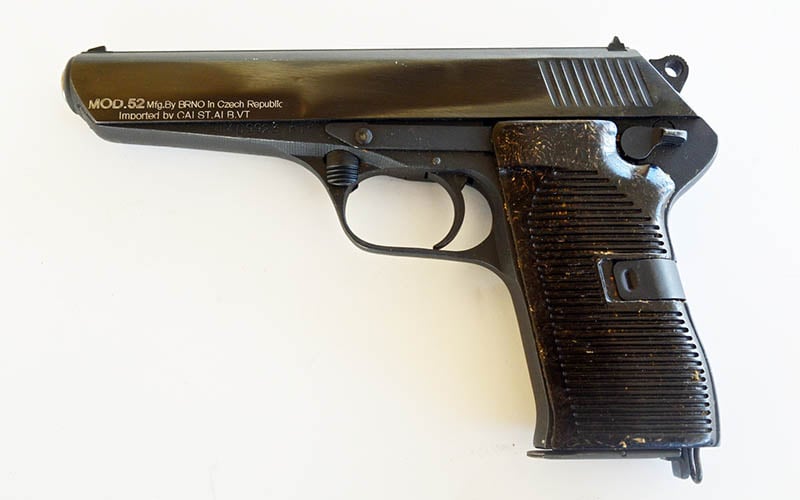
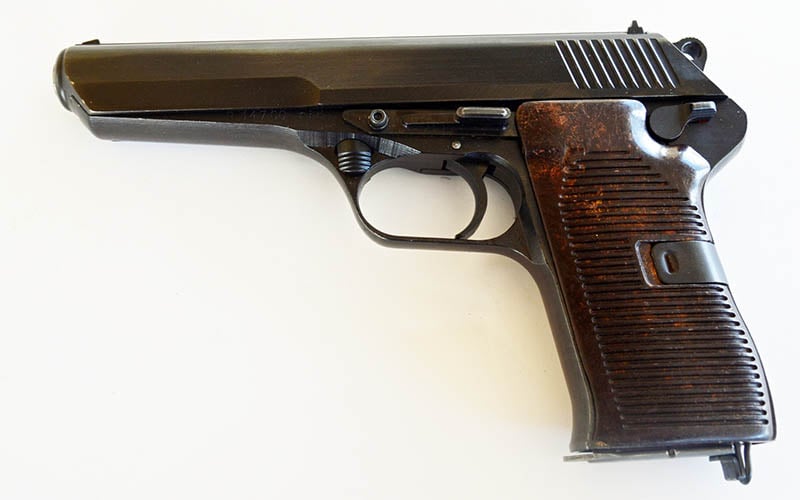

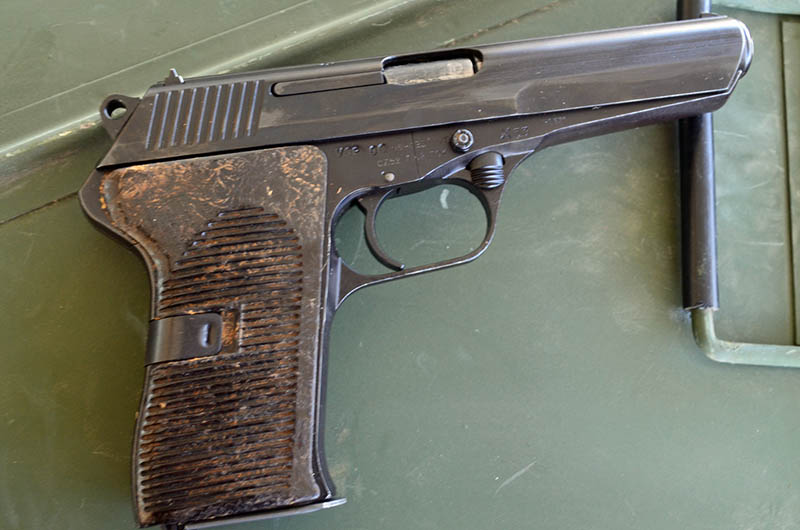
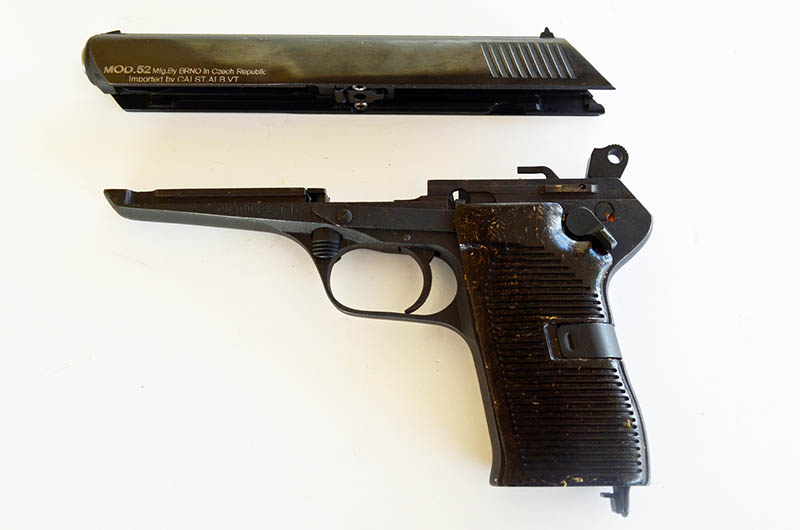

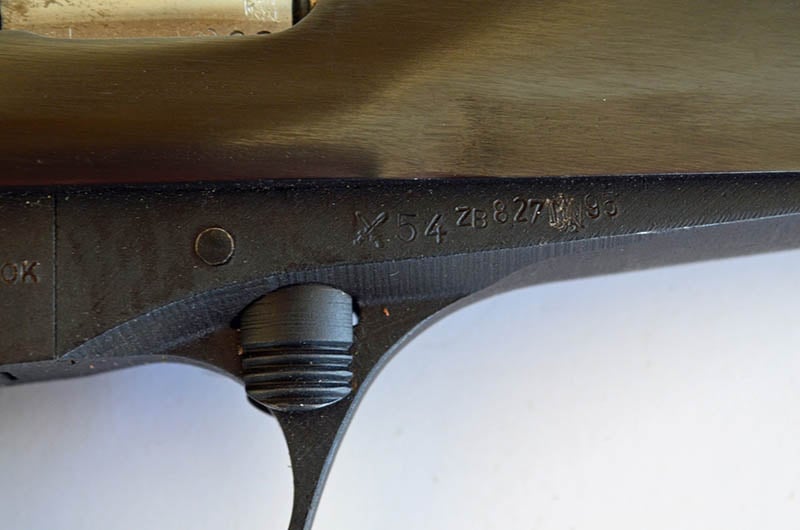
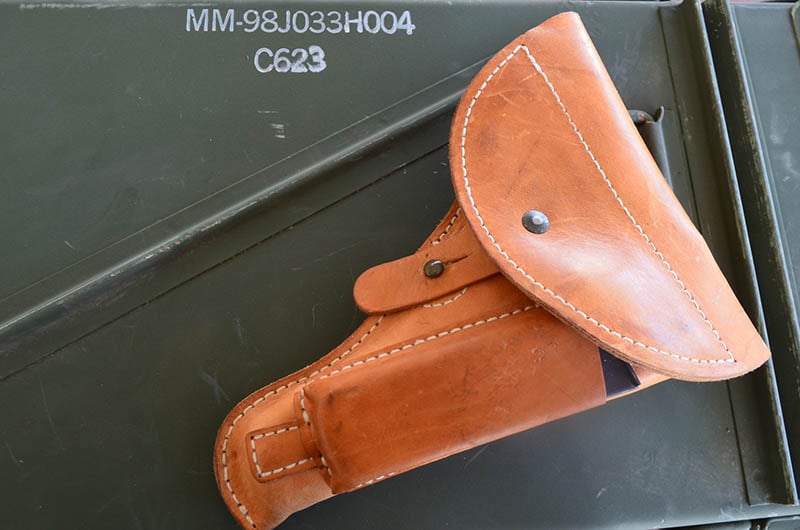
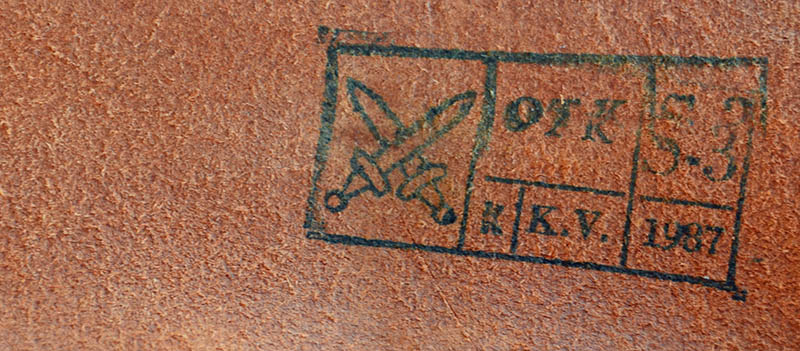



Leave a Reply